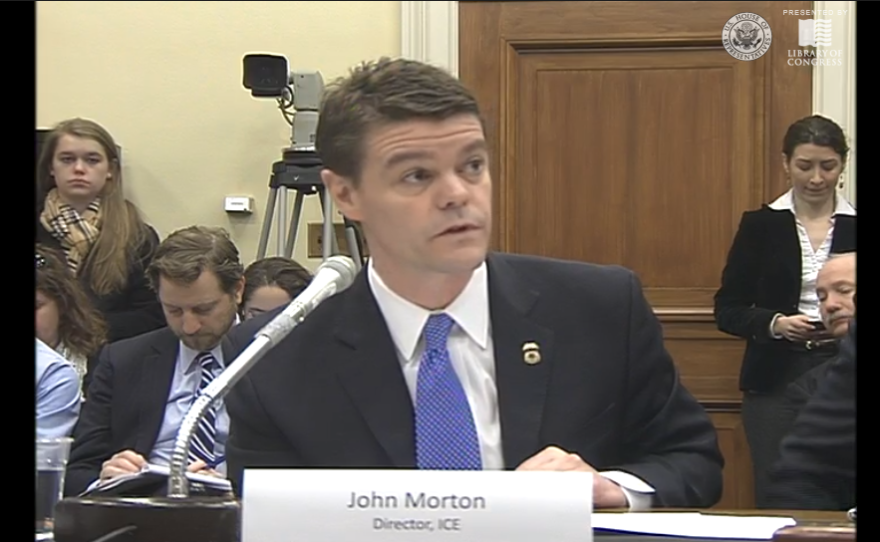In front of the subcommittee of Homeland Security Appropriations on Thursday, ICE Director John Morton said 2,228 immigrants were transferred from detention to supervised release in recent weeks due to budget cuts.
Previously, ICE had maintained that the number was “several hundred” nationwide, and 303 released specifically in Arizona.
A growing number of elected officials have called on the Department of Homeland Security to further explain the release of immigrant detainees from ICE custody due to looming sequestration. Thursday’s hearing was the first time ICE gave precise numbers.
In his testimony, Morton said on average, 700 detainees were released a week between Feb. 9 and March 1 due to budget concerns.
“Contrary to some reports, those released for budget reasons did not include thousands of criminals who posed a significant risk to public safety,” Morton said in his testimony. “Indeed 70 percent of those individuals released had no criminal record at all.”
He said the remaining 30 percent “were either misdemeanants or other criminals whose prior conviction was not a serious violent crime.”
All immigrants released still face deportation proceedings.
Morton said initially ten so-called “Level 1” offenders — those with the most serious criminal history on a three-point scale — were released, but four of those were later taken back into custody upon further review.
ICE has funding to maintain 34,000 detention beds a day. Morton said daily detention levels exceeded that earlier in the year, so the agency needed to detain fewer people in order to stay within budget.
Plus, he said the agency is now facing $300 million in cuts now that sequestration has taken effect.
At one point in the hearing, lawmakers grilled Morton and two of his ICE colleagues over whether they had received any pressure from above in their decision to release those detainees.
Morton said “this is an ICE call” and he took full responsibility as the agency head. He said the White House and Secretary of Homeland Security Janet Napolitano were not involved.
Rep. John Carter (R-Texas), who called the hearing, voiced his disappointment with the agency’s decision at several points.
“We had two major things happening, the sequester — which became a totally political issue in the month of February — and serious immigration reform being worked on by both the Senate and the House,” Carter said during the hearing. “And this was like throwing a hand grenade on the middle of that.”
Carter is among a group of bipartisan members of the House working on immigration reform legislation, but said news of the release of immigrants from ICE custody complicated public perception on the matter.
“When people hear detention, they think jail,” Carter said in comments to Fronteras Desk after the hearing concluded.
“So you get the people back home that you are trying to say [to], ‘We are going to rehash our immigration system, and we are going to set this up where it is fair, compassionate yet follows the rule of law.’ And they say, ‘Wait a minute the rule of law? You just turned loose a bunch of offenders.’”
“The clarification needed to be made immediately and it wasn't,” Carter said.
Morton said in his testimony that there is a misconception that most people in deportation proceedings are held in detention, when in fact it is a minority that are detained. He said at any given time about 150,000 immigrants awaiting immigration hearings are out on bond.
Rep. David Price (D-N.C.) used his time during the hearing to question the congressional mandate that ICE must fill 34,000 detention beds at all times.
“Why in the world should we blindly adhere to keep 34,000 people daily in costly penal detention when we could make wider use of alternatives to detention, save some money and engage in equally effective enforcement,” Price said. “That I think is a very basic question that we need to address going forward.”







